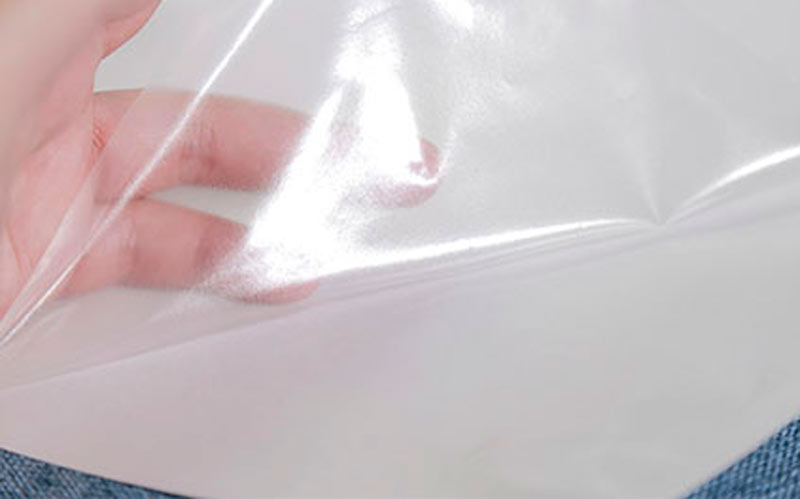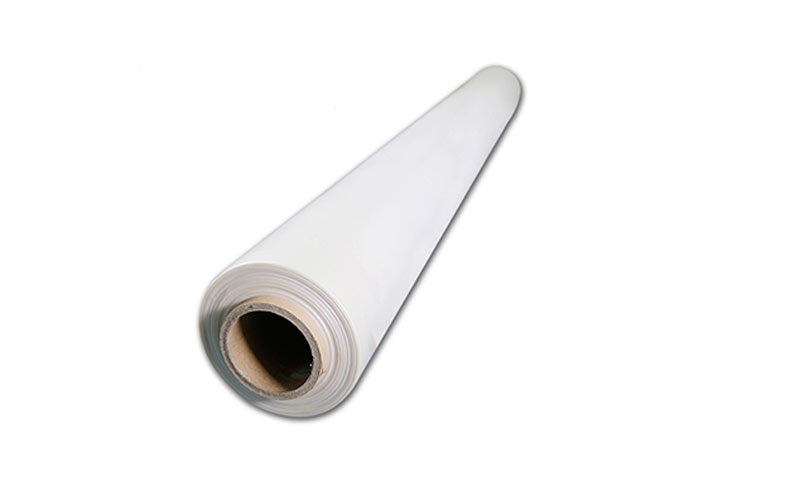Thermoplastic polyurethane (TPU) hot melt adhesive film is a highly versatile bonding material that has become a cornerstone across various industries due to its excellent elasticity, environmental friendliness, durability, and adaptability to complex shapes and surfaces. Among the many types of hot melt films, high-elastic TPU hot melt adhesive film stands out for its unique mechanical properties that combine strength and stretchability, making it especially ideal for applications requiring a soft touch, high flexibility, and superior adhesion under stress or deformation.
This article explores the diverse application fields of high-elastic TPU hot melt adhesive film, its functional advantages in each industry, and why it continues to replace traditional gluing methods in modern manufacturing. Whether in textiles, automotive, electronics, medical equipment, or sports gear, TPU adhesive films are transforming product design and production efficiency.

1. Garment and Apparel Industry
The garment industry is one of the largest consumers of high-elastic TPU hot melt adhesive film. The demand for seamless clothing, softwear finishes, and functional textiles has grown exponentially, and TPU adhesive films are central to this transformation.
1.1 Seamless Bonding
In high-performance clothing—such as yoga wear, cycling jerseys, compression garments, and outdoor jackets—the need for flexible, durable seams that do not irritate the skin is paramount. High-elastic TPU adhesive films eliminate the need for stitching, replacing traditional seams with smooth bonds that do not chafe, rub, or restrict motion.
1.2 Wash Resistance and Durability
The film maintains its bonding strength even after multiple wash cycles. Unlike some glues or tapes that deteriorate in the laundry, TPU hot melt adhesive film offers long-term resistance to water, detergent, and mechanical stress, making it ideal for sportswear, swimwear, and undergarments.
1.3 Fashion and Design Applications
Beyond performance, TPU adhesive film supports the creative vision of fashion designers. It allows for the lamination of decorative elements, such as logos, patterns, and labels, onto fabric surfaces without affecting the texture or flexibility. This opens up limitless opportunities for customization without compromising the integrity of the garment.
2. Footwear Manufacturing
In modern shoemaking, high-elastic TPU adhesive film plays a critical role in improving efficiency, cleanliness, and durability during the bonding of shoe components.
2.1 Upper and Sole Bonding
TPU hot melt adhesive films are widely used to bond uppers, linings, insoles, and soles, especially in athletic and outdoor footwear. The film’s flexibility accommodates movement and shape retention, while its strength ensures long-lasting adhesion in high-wear zones.
2.2 Enhanced Comfort
Traditional adhesives can create stiff zones within shoes, leading to discomfort. In contrast, TPU adhesive film maintains the natural softness and breathability of textile components, enhancing comfort without sacrificing structural integrity.
2.3 Eco-Friendly Footwear Trends
As footwear brands aim to reduce solvent emissions, TPU adhesive films provide a solvent-free bonding alternative that meets global environmental regulations. It’s compatible with automation, making it suitable for large-scale green manufacturing.
3. Automotive Interior Bonding
Automobile interiors require bonding materials that can withstand temperature fluctuations, vibration, and wear, while providing a refined aesthetic. High-elastic TPU hot melt adhesive films offer a clean, odorless, and durable alternative to conventional gluing methods.
3.1 Dashboards and Interior Panels
TPU adhesive films are used to bond vinyl, leather, foam, and fabric to plastic or metal panels in the cabin. These bonds need to be both strong and flexible, allowing for thermal expansion without cracking or bubbling.
3.2 Seating and Trim Elements
From seat covers to door panels, TPU hot melt adhesive films are ideal for soft-touch assemblies. They maintain their bond across temperature extremes, are resistant to UV light, and do not release VOCs, contributing to a healthier vehicle interior.
3.3 Soundproofing and Insulation Layers
TPU adhesive film is often used to laminate acoustic foams and insulation materials, helping manufacturers achieve noise reduction goals while keeping the car cabin light and comfortable.
4. Electronics and Consumer Devices
The rise of wearable technology, smartphones, and touch-sensitive devices has accelerated the demand for bonding solutions that are thin, transparent, and highly flexible. TPU hot melt adhesive film perfectly fits this niche.
4.1 Touchscreen and Display Bonding
Due to its optical clarity and softness, TPU adhesive film is widely used in laminating touchscreen layers, protective films, and covers. It ensures precise adhesion without distorting visuals or introducing bubbles.
4.2 Flexible Circuit Boards
TPU adhesive film is compatible with flexible printed circuits, offering a secure yet pliable bond that allows devices to bend, fold, or twist—especially important in wearables and foldable smartphones.
4.3 Battery Packaging and Sensor Encapsulation
In electronic products that involve battery modules or embedded sensors, TPU adhesive film acts as an effective encapsulation material. It insulates and protects against moisture, dust, and vibration without adding bulk or weight.

5. Sports Equipment and Outdoor Gear
High-elastic TPU hot melt adhesive films are highly valued in the production of inflatable gear, waterproof equipment, and performance wearables, thanks to their mechanical flexibility, stretch recovery, and chemical resistance.
5.1 Inflatable Structures
Whether in air mattresses, boats, or outdoor tents, TPU adhesive film creates airtight and watertight seams that retain elasticity under pressure. These films are heat-sealed to ensure structural integrity in dynamic outdoor conditions.
5.2 Waterproof Wearables
TPU film is essential for producing rain jackets, ski suits, and survival gear. It forms barrier layers that repel water while maintaining breathability—ideal for prolonged outdoor use in challenging environments.
5.3 Sports Protection Gear
TPU adhesive films are used in the production of knee pads, wrist guards, and chest protectors, where they help bond protective foams and fabrics. Their elasticity allows the gear to move with the body without delamination.
6. Medical and Healthcare Applications
High-elastic TPU adhesive film is increasingly utilized in medical products due to its non-toxic, skin-friendly, and flexible characteristics.
6.1 Wound Dressings and Bandages
TPU adhesive films are used to create transparent wound dressings that are waterproof yet breathable. They conform to the skin, move with the patient, and maintain adhesion without irritation.
6.2 Medical Wearables
In devices like continuous glucose monitors, heart rate sensors, or electrodes, TPU adhesive film enables a secure yet comfortable fit on the skin. Its gentle adhesion allows for long-term wear without causing damage or discomfort.
6.3 Surgical Drape Films
TPU adhesive film provides sterile, protective layers used in surgical fields. These films are flexible, resistant to punctures, and easy to peel off after use, ensuring patient safety and clinical efficiency.
7. Luggage, Bags, and Leather Goods
High-elastic TPU adhesive film has found a niche in premium luggage and fashion accessories, replacing stitching and traditional adhesives to provide sleek, modern finishes.
7.1 Bonding Synthetic Leathers
In handbags and travel gear, TPU adhesive film is used to bond synthetic leather panels, foams, and liners. It ensures clean, stitch-free surfaces that enhance the product’s visual appeal and durability.
7.2 Heat-Sealed Pockets and Zippers
For waterproof backpacks and tactical gear, TPU adhesive film seals seams and fastens zippers and transparent pouches without compromising function or flexibility.
7.3 Fashion Detailing
Designers use the film to apply embellishments, trims, and logos to high-end accessories. Unlike glue, TPU film keeps edges clean and maintains the product’s shape even under heavy use.
8. Industrial Lamination and Composite Materials
In industrial manufacturing, high-elastic TPU adhesive films are used to laminate multilayer materials—often combining plastics, metals, and fabrics—to create composites with tailored properties.
8.1 Filter Media and Protective Fabrics
In air and fluid filtration, TPU adhesive films bond layers of mesh, foam, and barrier membranes. These composite filters retain performance across temperature and pressure changes.
8.2 Industrial Fabrics and Conveyor Belts
The film is also used to bond industrial textiles for conveyor belts, insulation jackets, and tarpaulins, enhancing tear strength and weather resistance without reducing flexibility.
Conclusion: A Versatile, High-Performance Bonding Solution
The applications of high-elastic TPU hot melt adhesive film are as diverse as they are advanced. Its softness, strength, transparency, environmental compatibility, and ease of use have made it an essential material across a wide spectrum of industries. As global manufacturing trends push toward automation, sustainability, and product miniaturization, this film continues to meet evolving technical demands with outstanding versatility.
Whether you’re working in fashion, automotive, electronics, healthcare, or industrial design, high-elastic TPU hot melt adhesive film can elevate your production efficiency, product quality, and user satisfaction.
Looking for a Reliable Supplier?
If you are in search of a professional and experienced manufacturer of hot melt adhesive films, feel free to contact Alster. As a dedicated producer of high-performance adhesive solutions, Alster offers customized, scalable, and quality-guaranteed TPU films to support your innovation and production needs.
